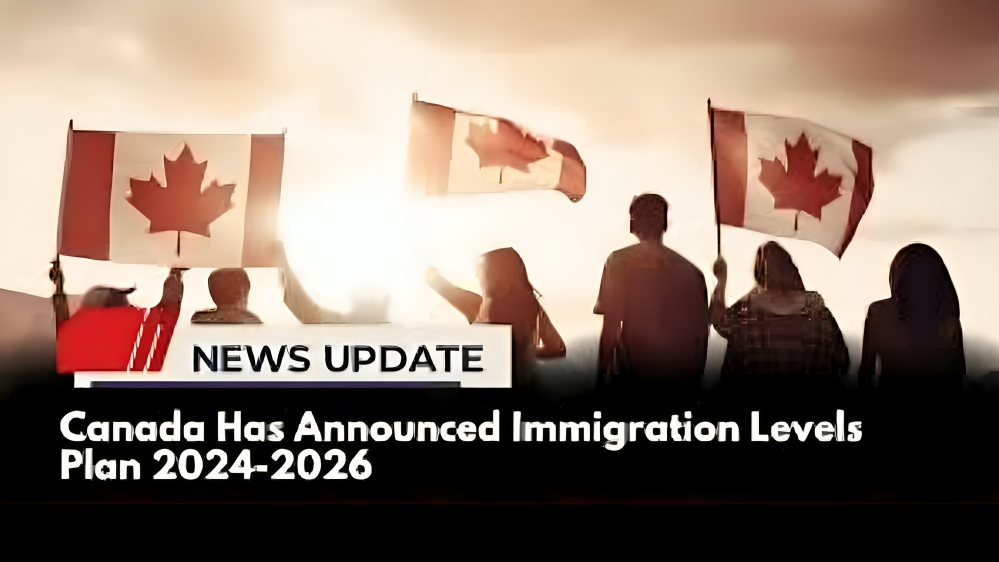
Immigration, Refugees, and Citizenship Canada (IRCC) has announced plans to target a reduction in the temporary resident population over the next three years. This strategic shift aims to address concerns over housing affordability, labor market dynamics, and social services, while also responding to the challenges posed by the COVID-19 pandemic. IRCC intends to achieve this reduction through various measures, including tightening eligibility criteria for temporary visas and enhancing enforcement measures. While targeting a reduction may address certain concerns, it also raises important considerations regarding the impact on temporary residents and the broader implications for Canada’s economy and society. Individuals currently residing in Canada on temporary visas may face challenges in renewing their visas or may be required to leave the country once their visas expire. Furthermore, reduced opportunities for temporary residency may affect international students’ ability to pursue education in Canada and temporary workers’ access to employment opportunities. As IRCC moves forward with implementing its plan, it will be crucial to strike a balance between achieving reduction targets and ensuring fairness and inclusivity in Canada’s immigration system.
The Immigration, Refugees, and Citizenship Canada (IRCC) has announced a strategic shift aiming to reduce the temporary resident population over the next three years. This decision is motivated by concerns such as housing affordability, labor market dynamics, and the impact of the COVID-19 pandemic. IRCC plans to achieve this reduction by implementing measures like tightening eligibility criteria for temporary visas and enhancing enforcement. While this strategy may address certain issues, it raises considerations regarding its impact on temporary residents and Canada’s economy. Those residing on temporary visas may face challenges renewing their status or may be required to leave upon expiration. Moreover, limitations on temporary residency could affect international students’ educational pursuits and temporary workers’ employment prospects. As IRCC proceeds with its plan, it must balance reduction targets with fairness and inclusivity in Canada’s immigration system. This shift underscores a commitment to prioritize the well-being of Canadian citizens and permanent residents, but the potential repercussions on temporary residents and broader economic implications warrant careful consideration in the implementation process.
Immigration, Refugees, and Citizenship Canada (IRCC) have unveiled plans to reduce the temporary resident population over the next three years. The move aims to address concerns such as housing affordability, labor market dynamics, and the fallout from the COVID-19 pandemic. IRCC intends to achieve this reduction through measures such as tightening eligibility criteria for temporary visas and enhancing enforcement. While this strategy may tackle pressing issues, it raises concerns about the impact on temporary residents and the broader economy. Individuals on temporary visas might encounter challenges renewing their status or face mandatory departure upon expiry. Additionally, restrictions on temporary residency could impede international students’ academic pursuits and hinder temporary workers’ employment prospects. As IRCC progresses with its plan, it must navigate a delicate balance between reduction targets and maintaining fairness and inclusivity within Canada’s immigration system. This strategic shift underscores a commitment to prioritizing the welfare of Canadian citizens and permanent residents, yet the potential ramifications on temporary residents and the wider economy necessitate cautious consideration during implementation.
Canada’s Immigration, Refugees, and Citizenship Canada (IRCC) recently announced plans to reduce the temporary resident population over the next three years. This shift in strategy comes in response to concerns surrounding housing affordability, labor market dynamics, and the impact of the COVID-19 pandemic. IRCC aims to achieve this reduction by implementing measures such as tightening eligibility criteria for temporary visas and strengthening enforcement mechanisms. While this approach may address immediate
1. Introduction
The Immigration, Refugees, and Citizenship Canada (IRCC) has announced plans to target a reduction in the temporary resident population over the next three years. This significant shift in immigration strategy aims to address specific challenges and achieve long-term objectives for Canada’s immigration system.
2. Understanding IRCC Plan

IRCC’s plan involves implementing measures to reduce the number of temporary residents in Canada, including temporary workers, international students, and visitors. The focus is on managing the inflow of temporary residents to align with the country’s economic and social priorities.
3. Reasons for Targeting Reduction
Several reasons contribute to IRCC’s decision to target a reduction in the temporary resident population. These include concerns over the impact of temporary residents on housing affordability, labor market dynamics, and social services. Additionally, the COVID-19 pandemic has highlighted the need to reassess immigration policies and prioritize the well-being of Canadian citizens and permanent residents.
4. Strategies to Achieve Reduction

IRCC plans to implement various strategies to achieve the targeted reduction in the temporary resident population. These may include tightening eligibility criteria for temporary visas, reducing the number of work permits issued, and enhancing enforcement measures to ensure compliance with visa conditions.
5. Impact on Temporary Residents

The reduction in the temporary resident population may have significant implications for individuals currently residing in Canada on temporary visas. Those affected may face challenges in renewing their visas or may be required to leave the country once their visas expire. Additionally, reduced opportunities for temporary residency may impact international students’ ability to pursue education in Canada and temporary workers’ access to employment opportunities.
6. Challenges and Considerations
While targeting a reduction in the temporary resident population may address certain concerns, it also presents challenges and considerations. These include potential economic implications, such as labor shortages in key industries, as well as ethical considerations regarding the treatment of temporary residents and their contributions to Canadian society.
7. Conclusion
IRCC’s decision to target a reduction in the temporary resident population reflects a strategic shift in immigration policy to prioritize the well-being of Canadian citizens and permanent residents. While this approach may address certain challenges, it also raises important considerations regarding the impact on temporary residents and the broader implications for Canada’s economy and society. As IRCC moves forward with implementing its plan, it will be essential to strike a balance between achieving reduction targets and ensuring fairness and inclusivity in Canada’s immigration system.
